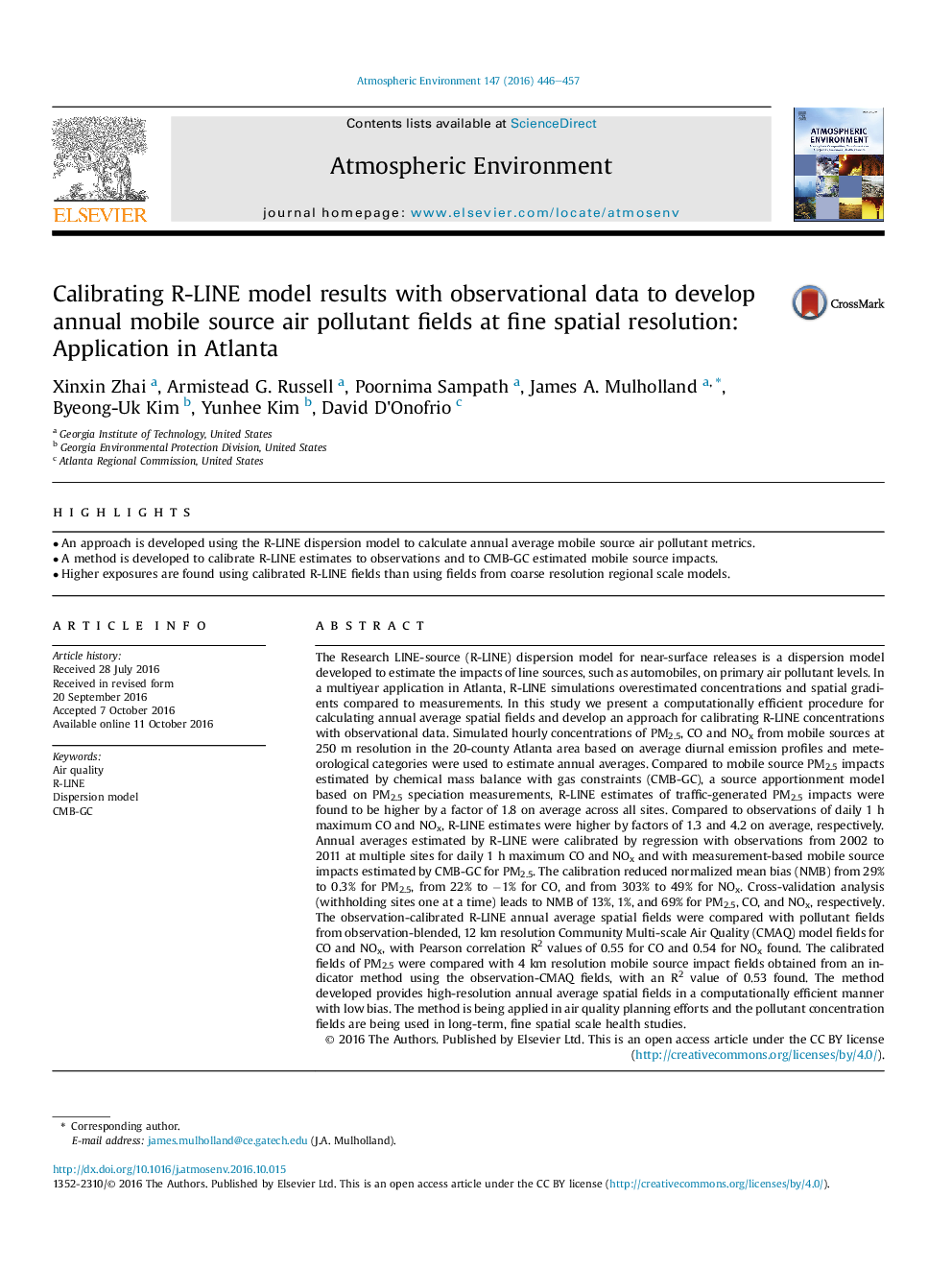| کد مقاله | کد نشریه | سال انتشار | مقاله انگلیسی | نسخه تمام متن |
|---|---|---|---|---|
| 6335608 | 1620327 | 2016 | 12 صفحه PDF | دانلود رایگان |
عنوان انگلیسی مقاله ISI
Calibrating R-LINE model results with observational data to develop annual mobile source air pollutant fields at fine spatial resolution: Application in Atlanta
دانلود مقاله + سفارش ترجمه
دانلود مقاله ISI انگلیسی
رایگان برای ایرانیان
موضوعات مرتبط
مهندسی و علوم پایه
علوم زمین و سیارات
علم هواشناسی
پیش نمایش صفحه اول مقاله

چکیده انگلیسی
The Research LINE-source (R-LINE) dispersion model for near-surface releases is a dispersion model developed to estimate the impacts of line sources, such as automobiles, on primary air pollutant levels. In a multiyear application in Atlanta, R-LINE simulations overestimated concentrations and spatial gradients compared to measurements. In this study we present a computationally efficient procedure for calculating annual average spatial fields and develop an approach for calibrating R-LINE concentrations with observational data. Simulated hourly concentrations of PM2.5, CO and NOx from mobile sources at 250 m resolution in the 20-county Atlanta area based on average diurnal emission profiles and meteorological categories were used to estimate annual averages. Compared to mobile source PM2.5 impacts estimated by chemical mass balance with gas constraints (CMB-GC), a source apportionment model based on PM2.5 speciation measurements, R-LINE estimates of traffic-generated PM2.5 impacts were found to be higher by a factor of 1.8 on average across all sites. Compared to observations of daily 1 h maximum CO and NOx, R-LINE estimates were higher by factors of 1.3 and 4.2 on average, respectively. Annual averages estimated by R-LINE were calibrated by regression with observations from 2002 to 2011 at multiple sites for daily 1 h maximum CO and NOx and with measurement-based mobile source impacts estimated by CMB-GC for PM2.5. The calibration reduced normalized mean bias (NMB) from 29% to 0.3% for PM2.5, from 22% to â1% for CO, and from 303% to 49% for NOx. Cross-validation analysis (withholding sites one at a time) leads to NMB of 13%, 1%, and 69% for PM2.5, CO, and NOx, respectively. The observation-calibrated R-LINE annual average spatial fields were compared with pollutant fields from observation-blended, 12 km resolution Community Multi-scale Air Quality (CMAQ) model fields for CO and NOx, with Pearson correlation R2 values of 0.55 for CO and 0.54 for NOx found. The calibrated fields of PM2.5 were compared with 4 km resolution mobile source impact fields obtained from an indicator method using the observation-CMAQ fields, with an R2 value of 0.53 found. The method developed provides high-resolution annual average spatial fields in a computationally efficient manner with low bias. The method is being applied in air quality planning efforts and the pollutant concentration fields are being used in long-term, fine spatial scale health studies.
ناشر
Database: Elsevier - ScienceDirect (ساینس دایرکت)
Journal: Atmospheric Environment - Volume 147, December 2016, Pages 446-457
Journal: Atmospheric Environment - Volume 147, December 2016, Pages 446-457
نویسندگان
Xinxin Zhai, Armistead G. Russell, Poornima Sampath, James A. Mulholland, Byeong-Uk Kim, Yunhee Kim, David D'Onofrio,